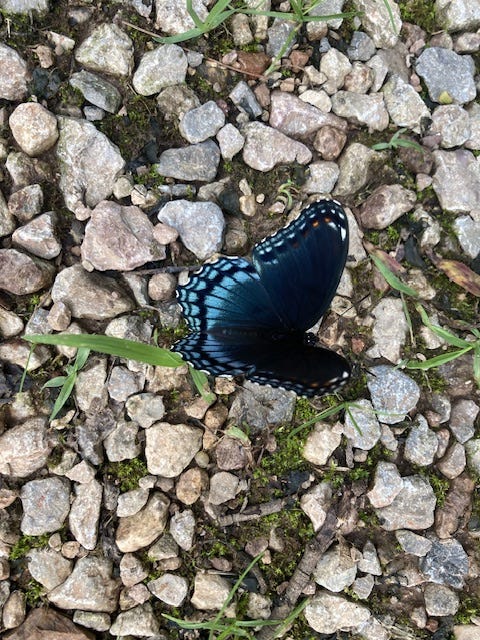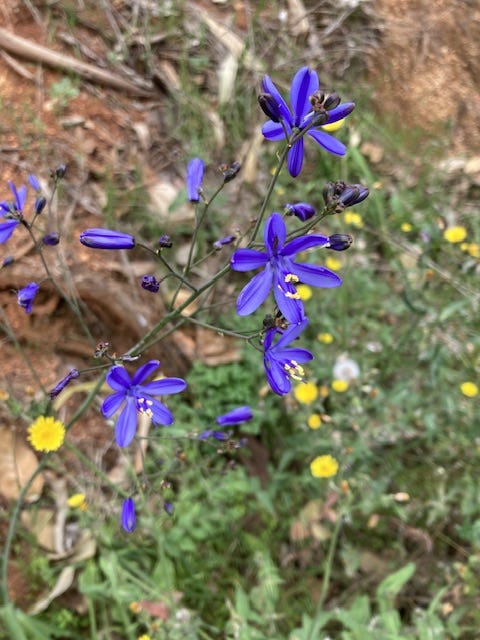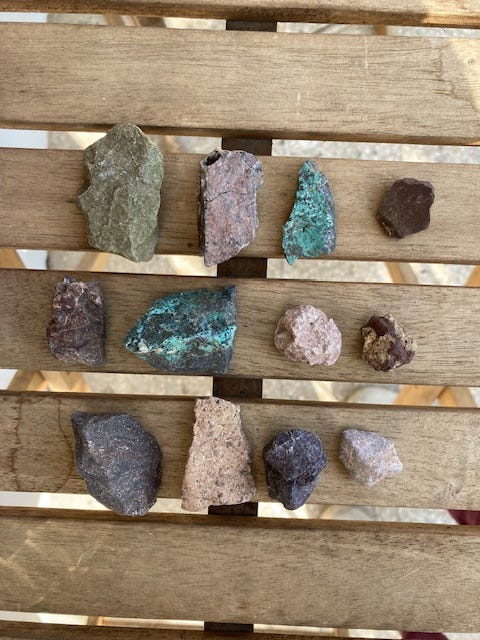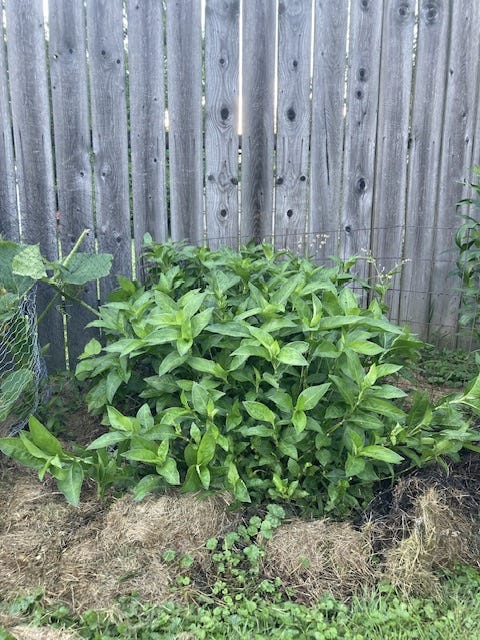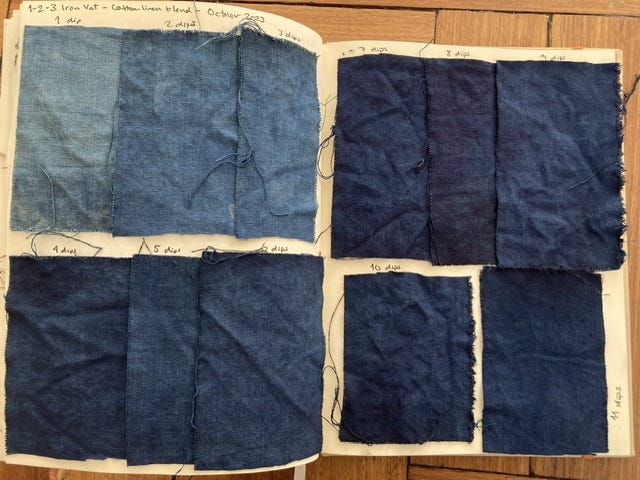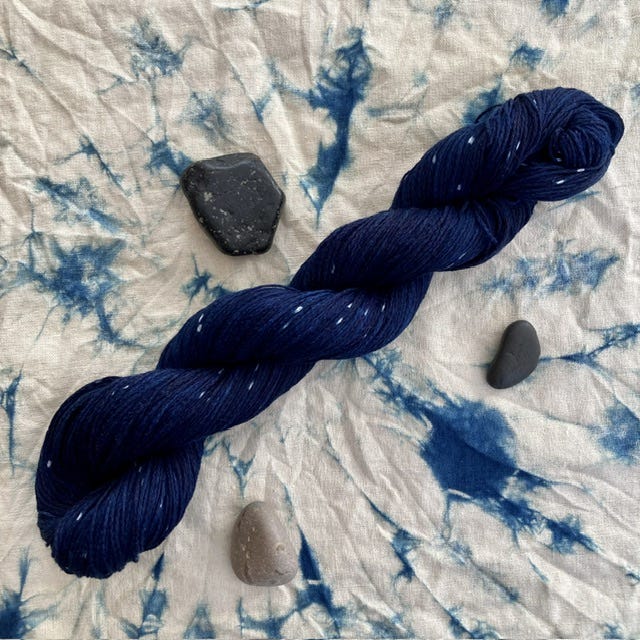This post is too long for email! Read the full version here.
This newsletter has English and Spanish versions. To choose which language you receive, visit your settings on Substack, find this newsletter under Subscriptions, and select the language(s) you want.
Leer en español aquí.
I didn’t mean to write about blue again so soon but it’s a color that has a way of pulling you in. There is no shortage of songs and books about blue, much more than about any other color. This just makes sense- it’s a color you can fall in love with, meditate in, live in. Blues is rarer in other colors than nature, and when we do see blue in plants or animals it’s to admire only- we can’t extract these blues for our own purposes. Only one plant, indigo (there are several different species of it) will allow us to obtain blue for our own purposes, and it doesn’t appear blue- only through chemical reduction can we release blue from the leaves.
This butterfly (which iNaturalist tells me is a Red-spotted Purple) loves to hang out in the driveway at Hog Wallow. I learned from “Blue: The Science and Secrets of Nature’s Rarest Color,” that many butterflies appear colored because of structural colors- tiny structures that make up the scales on their wings that can bend, scatter or reflect light in ways that extinguish or absorb certain colors and reflect others, which are the ones we see. In the case of blue butterflies, the blue light waves are amplified by the angle the light hits the structures and the light rays of other colors are extinguished. But producing this blue takes “a precisely calibrated balance between order and disorder”- the tiny structures are of slightly different sizes and heights, so that the butterfly’s wings can appear blue from many angles.
You might expect that you could get certain colors for dye or pigment by finding plants, minerals, or even animals that are that color but it’s usually more complicated than that, especially when it comes to blue. Blue flowers, for example, won’t make blue dye. The blue in flowers comes from anthocyanins, dye compounds that can be used to produce an incredible spectrum of colors from pink and yellow to purples, greens and blues due to their high pH sensitivity. While they are not hard to find or to extract color from, they are not particularly stable as dyes, usually fading faster than other dye compounds and changing color at the slightest shift in pH. They can sometimes produce a blue, but not a long-lasting one. These azulillo flowers are one of my favorites to spot in the landscape in mid to late September. I did a color test with a few last year and got beautiful soft pinks and purples with cream of tartar, but the color disappeared overnight, before I even had a chance to photograph it properly. This short video below is the only record of it. While there are other anthocyanin colors that stay around for longer, this one was only experienced in the moment, a color memory, a feeling. Now, I wait for spring and then go to where they are, to appreciate the color they offer on their own terms.
The blues in this site-specific rock collection are from copper. For safety reasons, I haven’t experimented with grinding it up for pigment (copper dust is toxic) and so, like the blues of butterflies and flowers, it remains a blue I appreciate as an intrinsic property of the rock, a hard blue, a blue to hold.
And so, for blue dye, there is only indigo. There are so many ways to be inspired by blue in nature, but only one plant offers us the opportunity to obtain a lasting blue in textiles. Even then nature doesn’t make it as easy: to become soluble in water and therefore available as a textile dye, indigo must be reduced in an alkaline environment, a chemical reaction that is more complicated than the dye extraction process for other plants. Blue, for the natural dyer, holds an endless fascination: indigo is a journey, an obsession, a lifelong process of learning and creating and transforming leaves into blue, a project at once scientific and mystical.
I recently made an iron vat, concurrent with the online class I’m taking about the chemistry of natural dyes. The iron vat is a perfect way to learn about redox reactions: iron is oxidized in the vat, and we can use the oxidization of iron to reduce indigo, making it soluble in water and therefore available as a textile dye. Oxidizing iron to create soluble indigo, the instructor pointed out, could be considered “blue rust.” (Ok, not exactly, but still an interesting way to understand what is happening.)
This is the first time I’ve made a vat with iron as the reducing agent- I primarily dye with wool and silk and iron is not recommended for protein fibers because it can damage them (although I am really interested in MO Fiber’s experiments with an iron vat on wool- see the “Indigo science” highlight). I had on hand a few skeins of linen yarn, a couple yards of cotton-linen fabric, and then my backup plan whenever I need to exhaust a dye bath which is just to give a few of my naturally dyed t shirts a refresh.
For a while now I’ve had the idea to use resists on yarn to make indigo speckles: a dark blue yarn with tiny white flecks, like snowflakes against a night sky. I’ve experimented with this a few times, but with all my failed indigo vats or not having enough indigo to get deep blues because of how many skeins I was dyeing with the vat or not quite getting the effect I wanted with the resist technique, I was always underwhelmed by the results. But I couldn’t let go of the general concept, convinced that my vision could be achieved. I’ve seen from others’ results that the iron vat can produce deeper blue than the fructose vats I’ve been using, and dyeing some cellulose fiber seemed like a nice way to give myself a break after all the trouble I’ve had dyeing wool (because of the alkalinity of the indigo vat, it’s more suited for dyeing cellulose than protein fibers).
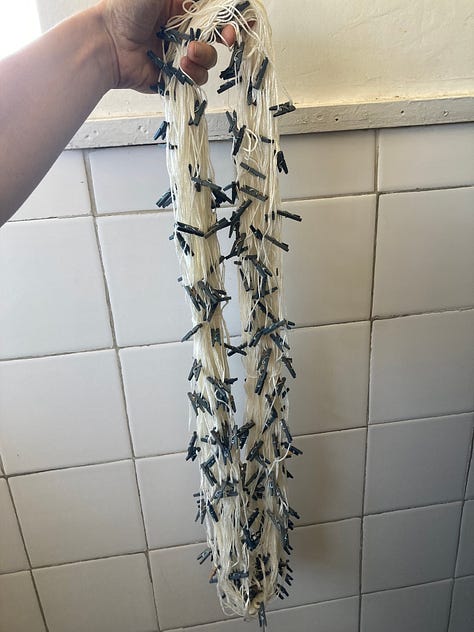
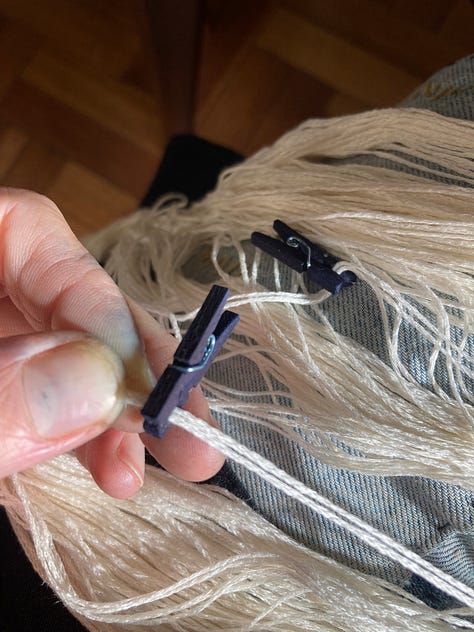
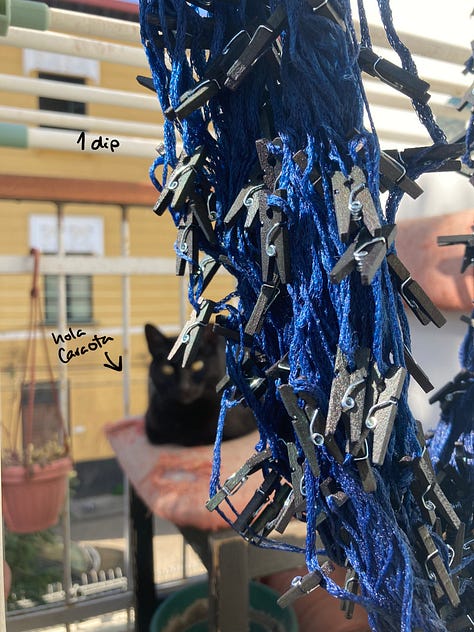
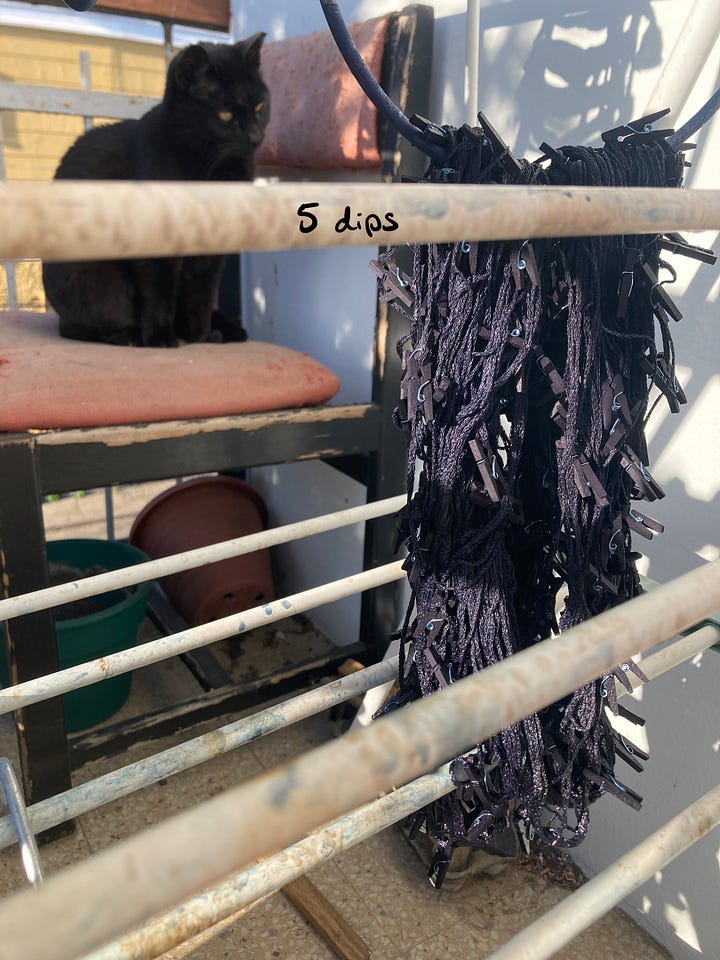
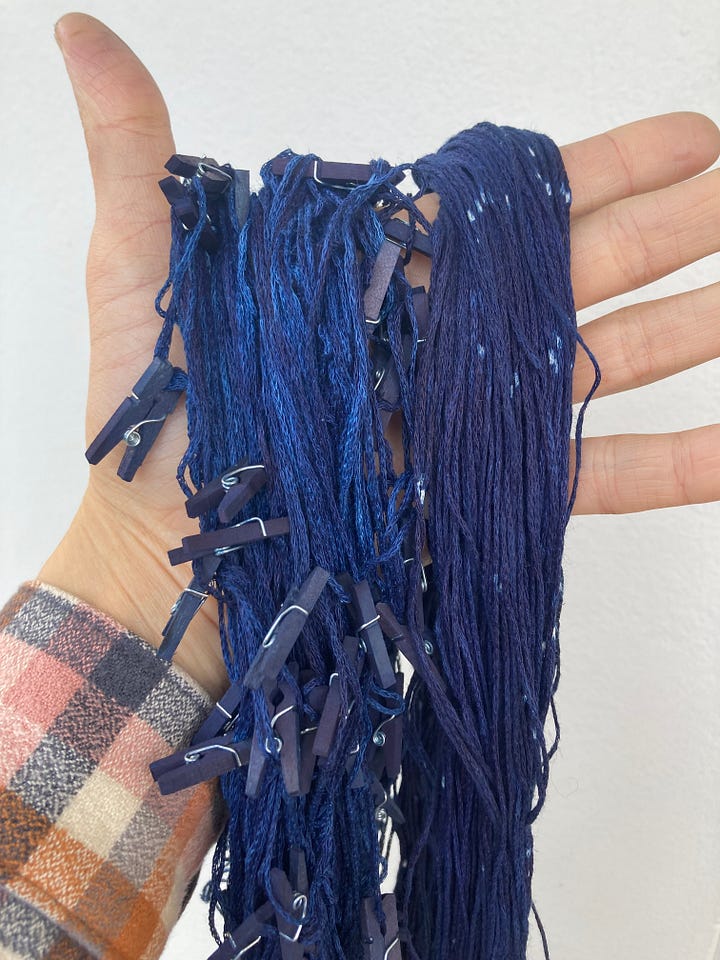
My resist method of choice is mini clothespins. You can find small quantities of mini clothespins at your local craft store but I bought 500 on Am*zon (always my last resort, but I couldn’t find a large enough quantity anywhere else). I’ve also tried making the resist with ties, but the downside here is that the knots in the ties have to be cut open (they are pretty much impossible to unpick) so I risked accidentally cutting my yarn and had to throw away a lot of small bits of string. Wood clothespins dye with the indigo but they can be reused indefinitely. The process of clipping tiny clothespins into a skein of yarn is painstakingly slow, of course. I clip each one individually, and I find that the results are better if I take care to catch just one or two strands of yarn in each clip. I also imagined that the effect would be more dramatic with a darker blue, so I dipped the clothespinned skeins in the vat eight times, carefully rinsing and oxidizing between each dip.
Indigo is a multisensory experience. The vat has a particular smell, fermented, pungent, but with an earthy comfort that many dyers come to love over time. I can’t imagine it ever being sold as a perfume or anything but I also fully believe it smells amazing. The scent lingers on indigo dyed textiles and I savor it, holding skeins up to my nose and remembering my time with them at the vat. Fresh indigo smells like spinach, fresh and nutritious and peppery. You actually can eat indigo, although I’ve never been tempted to try since its dye potential is so precious to me.
Indigo also highlights the sense of touch, as one of its perceived drawbacks is its lack of rubfastness. Satisfied with my results in the skein, I now need to knit a sample to see if the effect translates well to a knitted fabric. Even with my best efforts to rinse properly and thoroughly, the indigo rubs off on my hands as I knit, tracing the path of my yarn through my fingers, a tensioning process that is unique to every knitter. I watch how the yarn moves through my hands and onto the needle and grows in my lap, a visible record of the blue we revealed together and the muscle memory that transforms it into a scarf. It will wash easily off my hands and any other surface, but I still take care to use a metal needle for this project and not wear white or light-colored clothing.
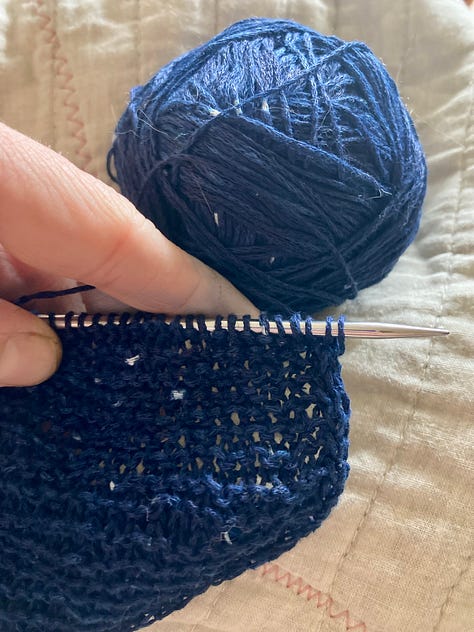

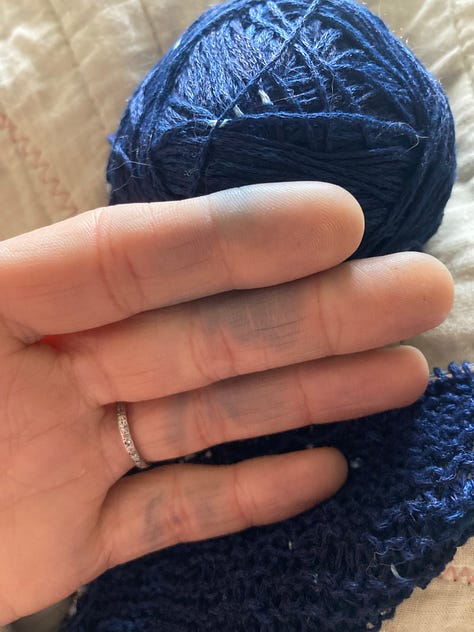
I could make a whole playlist of just songs that mention blue in the title, not to mention whole albums about the color blue, and the entire genre of blues. This is one of my favorite songs about blue, the lyrics on repeat as I examine my different natural blues: The blue of the flame / against the wires / The blue of the fire / against the hill / The blue of the sky / against the clouds- I like that they are specific blues, located in specific settings and contexts. Natural colors like to be held against each other, combination heightening the best qualities of each color.
Do you need some indigo blue in your life? Here are some indigo dyed things I’ve made recently that are all available at Expo Teje this weekend (get your ticket!), shipping anywhere in Chile, or, if you have a bit of patience, US delivery can be arranged.
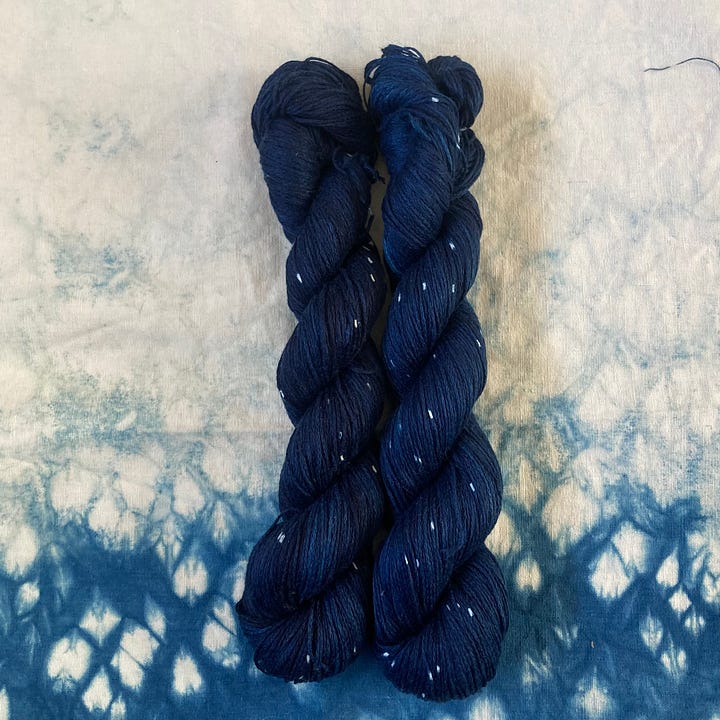
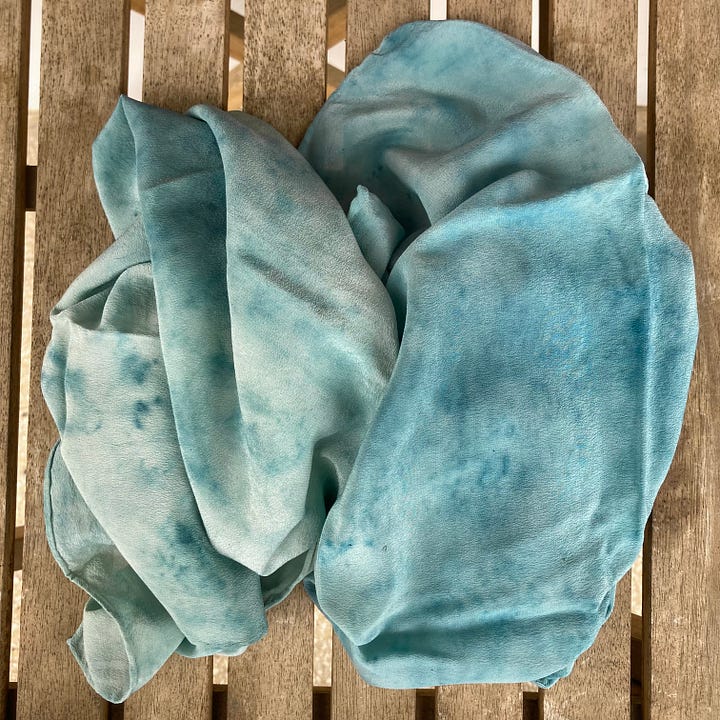
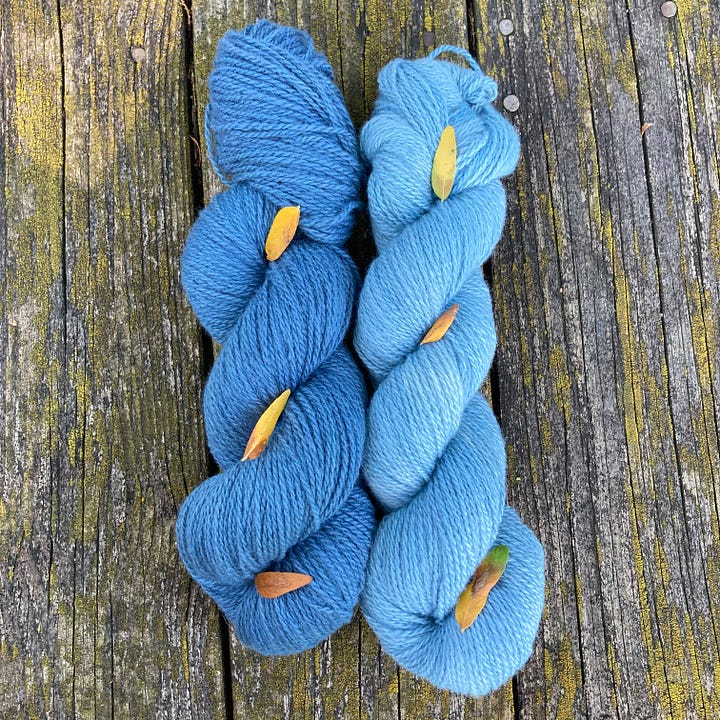
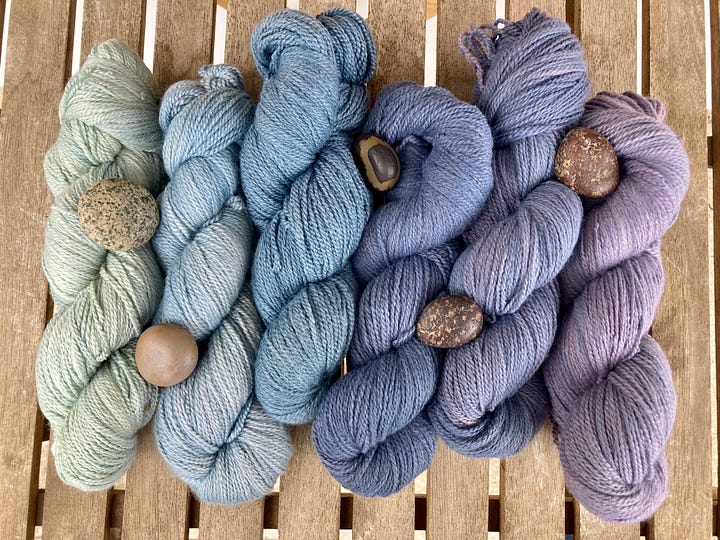
Thank you for reading and send me your favorite natural blues in a reply or comment!

